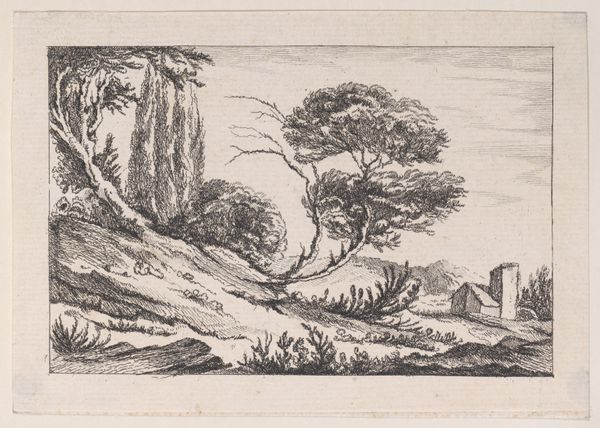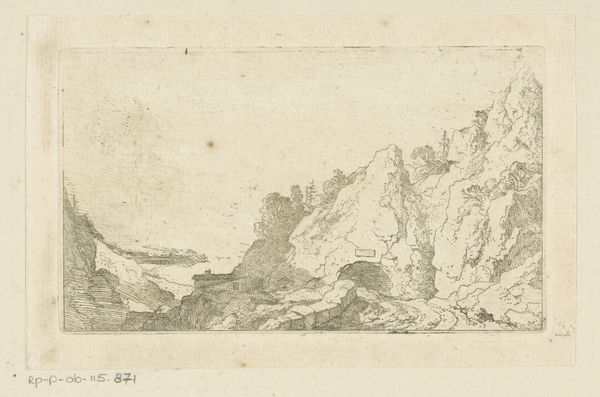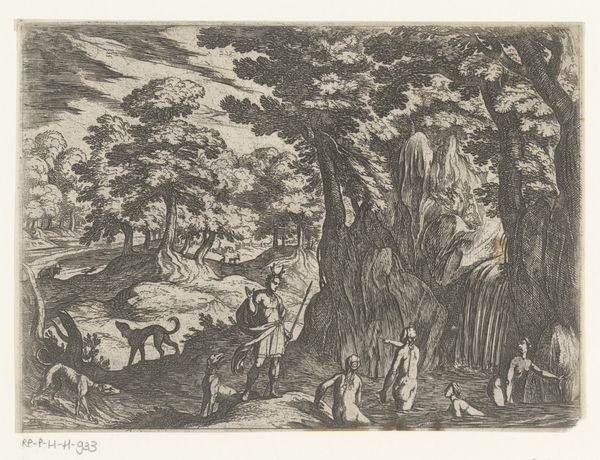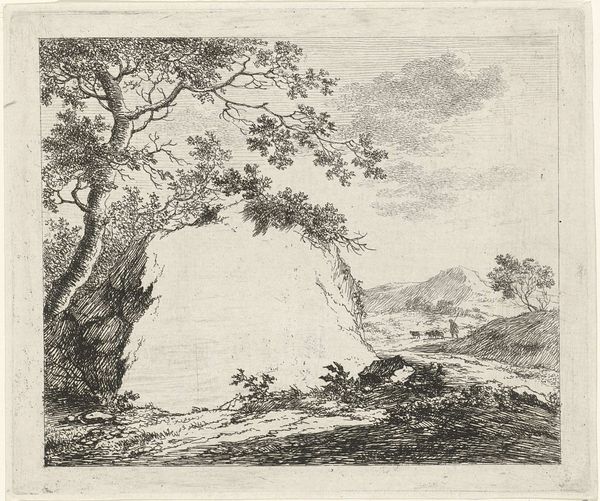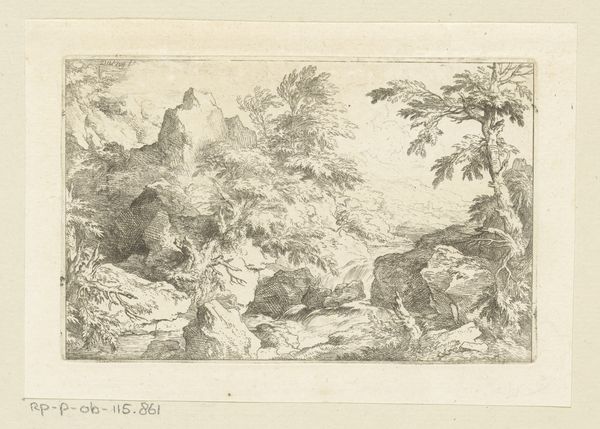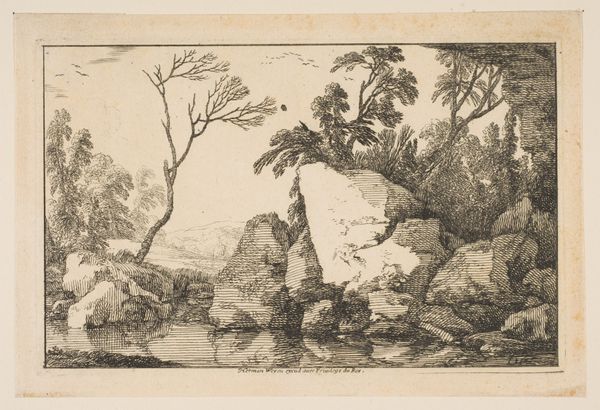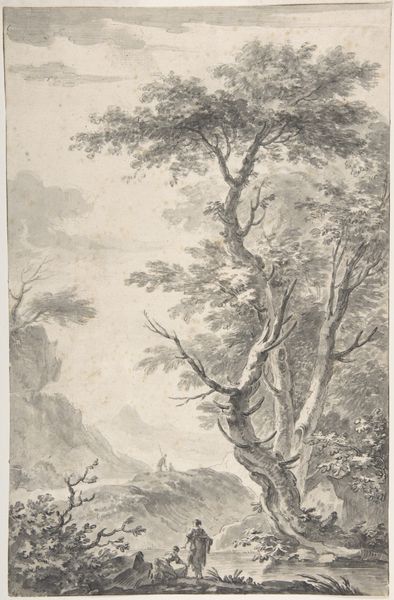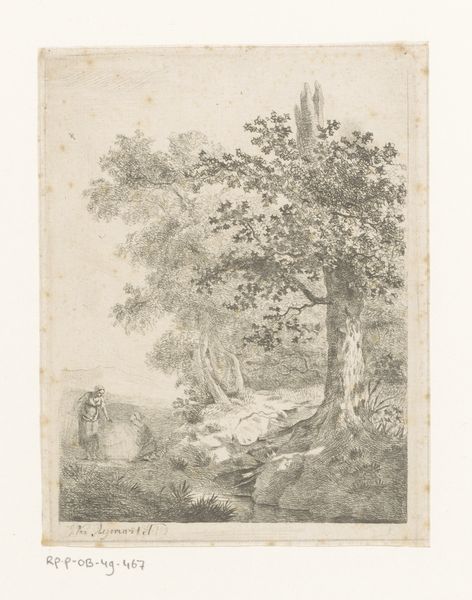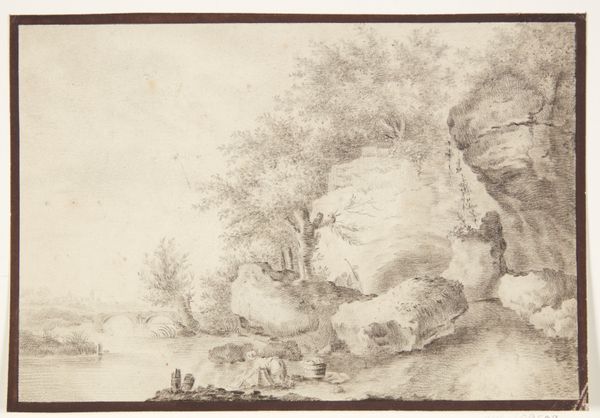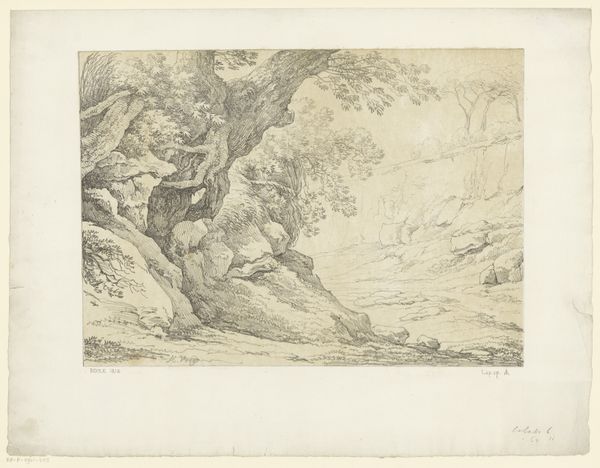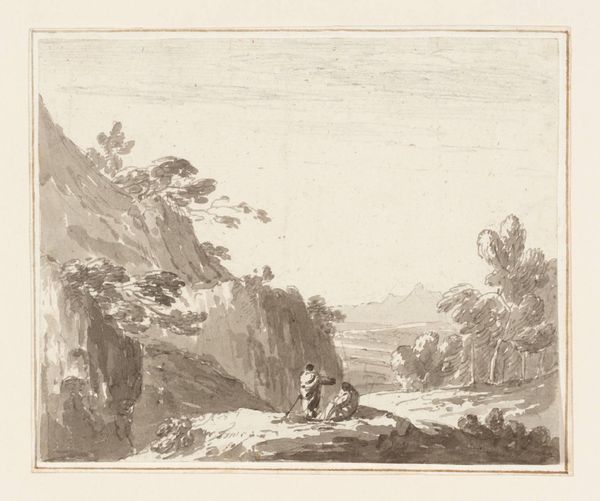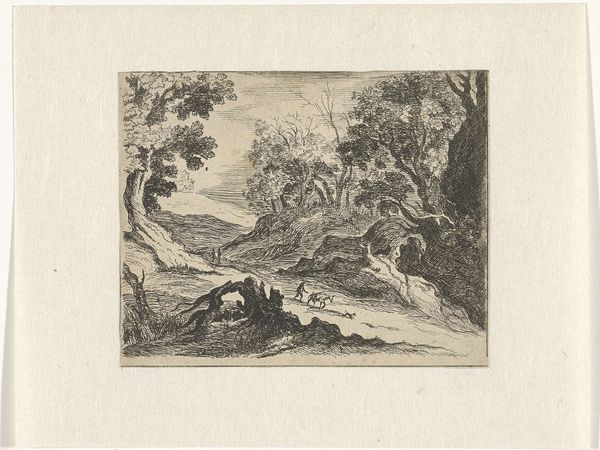
print, etching, engraving
#
dutch-golden-age
# print
#
etching
#
landscape
#
line
#
engraving
#
realism
Dimensions: height 95 mm, width 155 mm
Copyright: Rijks Museum: Open Domain
Curator: This is Frederick Bloemaert’s "Kustlandschap," a compelling etching and engraving completed after 1635. It's currently part of the Rijksmuseum's collection. Editor: Stark and unsettling. The contrast is striking – the sharp lines of the decaying trees against the softly rendered sky and distant water creates a somewhat ominous feeling. Curator: Indeed. Bloemaert worked during a period where Dutch landscape painting was becoming increasingly popular and politically charged. These types of images provided a sense of national identity, with strong roots in representations of property ownership and natural resources. Editor: You can really see the mastery of line here. Look at how the density of hatching defines form and space. The engraver varies the marks to mimic light, drawing the eye to specific points in the composition, making them appear sharp or soft based on technique alone. Curator: Right. The printmaking tradition allowed for wider dissemination of these images. Landscapes like this weren't just about the view—they became tools of representation, subtly reinforcing Dutch power and maritime ambitions at the time. The art market helped promote the visibility of these concepts within and outside of the Netherlands. Editor: It’s fascinating to see that contrast so plainly exhibited; it's a relatively modest piece, but through careful attention to form, the artist achieves a grand, and complex mood, suggesting drama and melancholy simultaneously. The composition almost suggests that the trees are pleading towards the sky and awaiting some greater happening to interrupt the desolation, as it fades softly into the light horizon. Curator: This work offers a microcosm of the artistic and political landscape of the Dutch Golden Age, which valued new markets and national ambition alongside nature and family—a concept rooted in Protestant ideology, of course. Editor: By carefully decoding and understanding that kind of formal language within it, we begin to glimpse both a historical perspective on a culturally formative era. Curator: Absolutely. And that intersection makes it an intriguing and enduring example of its time.
Comments
No comments
Be the first to comment and join the conversation on the ultimate creative platform.

